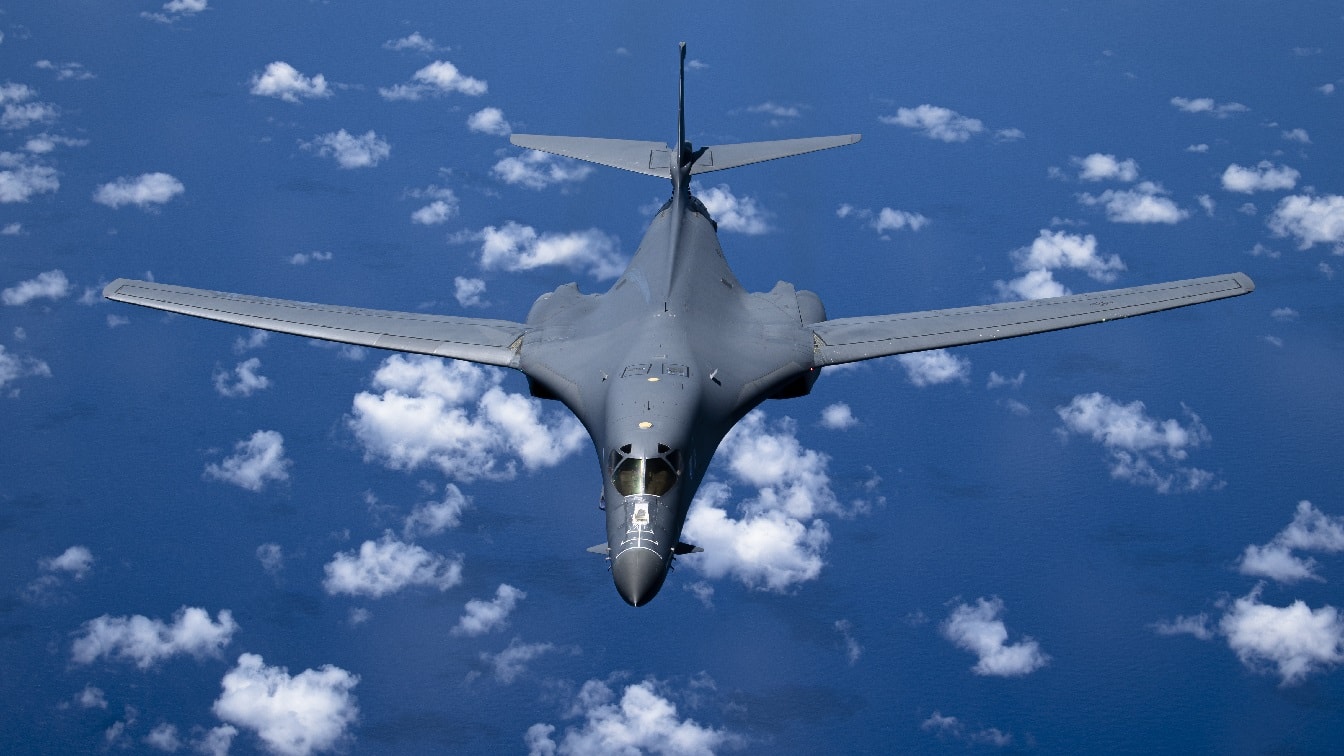U.S. officials are not taking North Korea’s escalating provocations lightly. Last week, American B-1B bombers were deployed separately to South Korea and Japan to participate in allied military drills.
Two B-1Bs flew alongside 12 Japanese fighter jets, while one B-1B joined South Korean airframes as part of Seoul’s ongoing Ulchi Freedom Shield exercises.
These regional military exercises are designed in part to deter the North Korean regime, which has threatened its adversaries with “nuclear retaliation.”
Japan’s defense ministry issued a statement calling its joint drills with the U.S. confirmation of the two militaries’ “readiness to respond” amidst Pyongyang’s hostile behavior including ballistic missile launches.
If the presence of B-1 bombers near its peninsula does not dissuade the Kim regime from its hostile rhetoric and actions, the U.S. and its allies could have to enhance their own “deterrence” efforts.
Meet the Rockwell B-1B Lancer
As one of three strategic bombers serving in the U.S. Air Force, the B-1 Lancer remains a workhorse.
In the 1960s, the service realized the need for an airframe that could sport a heavy payload without sacrificing speed.
The Air Force precisely desired a platform that possessed the payload and range of the Stratofortress with the top speed of the B-58 Hustler.
Around this time, the Soviet Union proved that its surface-to-air missiles (SAMs) could threaten high-altitude aircraft, making the need for a low-flying platform even more significant.
Although manufacturing group Rockwell International (now part of Boeing) got the green light to create this new platform, prioritizing the subsequent B-2 stealth bomber program ultimately put it on hold.
However, by the early 1980s, the B-1B program was revived.
Specs and Capabilities
Ordnance-wise, the B-1B Lancer can pack a punch.
In addition to being able to carry Joint Direct Attack Munitions (JDAMS), the B-1B can sport cluster bombs, air-to-surface stand-off missiles, general-purpose bombs, and laser-guided bombs.
The strategic bomber has a maximum internal weapons payload of 75,000 pounds and a maximum external payload of 59,000 pounds.
Over the years, the formidable platform underwent a series of facelifts-enhancing its already robust characteristics.
As detailed by Air Force Technology, “B-1B aircraft were fitted with the AN/AAQ-33 Lockheed Martin Sniper ATP advanced targeting pod in June 2008. Sniper includes a mid-wave FLIR (forward-looking infrared), dual mode laser, CCD-TV, laser spot tracker and IR marker. Sniper gives the B-1B the capability for self- identification of targets and bomb damage assessment. The first series of flight tests with the new pod took place in February 2007.”
Today, the Lancer holds nearly 50 world records for speed, range, payload and time of climb in its class. Notably, six Lancers alone dropped almost a quarter of the mortar used during the 1999 Operation Allied Force.
The strategic bomber platform has an honorable service history, making its appearance near the Korean peninsula a warning to Pyongyang.
The continuation of cooperative military drills between the U.S., Japan, and South Korea should thwart additional aggression by the Hermit Kingdom.
Maya Carlin, a Senior Editor for 19FortyFive, is an analyst with the Center for Security Policy and a former Anna Sobol Levy Fellow at IDC Herzliya in Israel. She has by-lines in many publications, including The National Interest, Jerusalem Post, and Times of Israel. You can follow her on Twitter: @MayaCarlin.
From the Vault
The Navy Sent 4 Battleships To Attack North Korea
‘Sir, We Hit a Russian Submarine’: A U.S. Navy Sub Collided with a Nuclear Attack Sub

